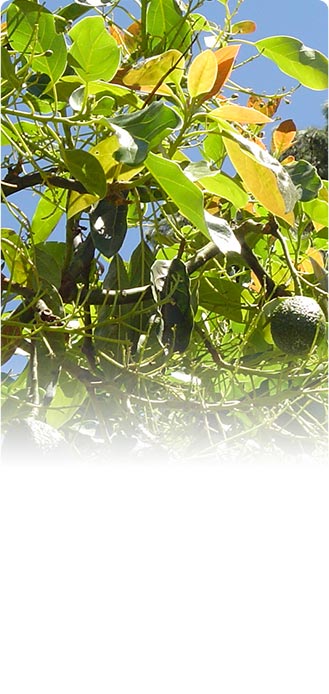Extracts of avocado or soy have been used in traditional medicine for ages; however it wasn't until the 1950s that the therapeutic properties of the unsaponifiable part of vegetal oils began to be clinically investigated. The ongoing discovery of the remarkable benefits of Avocado oil and Soybean oil Unsaponifiables (ASU) is based on decades of laboratory and clinical achievement. Professor Henri Thiers1 (1902-1979) pioneering research on vegetable oil unsaponifiables supports the continued exploration of ASU (Avocado and Soybean Unsaponifiables), and demonstrates their important role in medicine.
1955
Report on therapeutic benefits of carotenoids
Prof. Thiers reports the therapeutic benefits of carotenoids, the unsaponifiable component of red palm oil, in an ethyl alcohol solution1. He concludes that this "magnificent red" unsaponifiable, normally used in soap and margarine manufacturing, could be particularly beneficial for benign disturbances of bone growth and is not associated with side effects. "...it is obvious that the unsaponifiable of vegetable origin in alcohol solution has a therapeutic effect 1."
1971
ASU uses in cosmetology and medicine
Therapeutic uses for avocado oil and its unsaponifiable in cosmetology and medicine are further clarified by Prof. Thiers2. In particular, the unsaponifiable is recommended for dry skin and as an "excellent means" of cleaning oily skin. As a medical treatment, Prof. Thiers suggests the use of avocado oil unsaponifiables in scleroderma affecting subcutaneous connective tissue, growth epiphysites (as pain relief), mild ichtyosis associated with epiphysitis and in periodontitis. "Good quality avocado oil, either pure or enriched with its unsaponifiable, incorporated or not, into other cosmetics is of great interest 2". Later this year, Prof. Thiers and a colleague introduce the ASU combination as a successful treatment for epyphysitis with ichtyosis (diseases of the skin and cartilage)3. Their work subsequently draws a link between the two conditions for the first time due to the "remarkable action" of vegetable unsaponifiables (ASU). "Repeated treatment best prevents relapses, without risk of adverse events, which I have never observed during 10 years of prescribing unsaponifiables".3
1972-78
Pr. Thiers 20 years of research
After over 20 years of research, Prof. Thiers builds on the exciting results achieved 4 ,5. ASU are defined as being eutrophic, acting primarily on the epidermis, mucosa and collagen of the skin and bone. A role is found in scleroderma, cartilage disorders, periodontitis, post-inflammatory sclerotic connective tissue reactions and pain resulting from bone dystrophy of non-infectious origin. The lack of adverse effects with long-term use, especially renal or cardiovascular, is of great interest. Further, he describes the analgesic qualities in hip osteoarthritis with enthusiasm, "...short- and long-term results are excellent, as long as maintenance courses are given. I even have the impression of clinical and radiologic stabilisation 4."
"They [ASU] are of great interest in vertebral and hip arthralgia, where they seem to slow progression."
Today
Abundance of preclinical studies
Decades of research have led to an abundance of preclinical studies that are helping to decipher the mechanisms behind ASU activity. Subsequent large-scale clinical trials in humans have been able to document the therapeutic effects of ASU under strict conditions, making it a truly evidence-based therapy.
Did you know...

Prof. Thiers first had the idea that vegetable unsaponifiables may have therapeutic uses when he was observing guinea pigs given a scurvy-inducing diet and small amounts of vitamin C. When flatworms were fed with the muscles from these guinea pigs, they stopped growing. When cabbage or grass was returned to the guinea pigs’ diet, the worms continued to grow2.
Based on this, he suggested there was an unknown factor without which guinea pigs died with muscle stiffening and calcareous deposits in their tissues. These symptoms provided a potential model for the study of human conditions involving 'stiffening' of connective tissue and calcification such as scleroderma, which had never been recreated in an animal. A study in 1951 found this unknown factor to be stigmasterol, a provitamin occurring in vegetable oils2. And the rest, as they say, is history...
1. Thiers H, Zwingelstein G and Jouanneteau J. Therapeutic use of an ethyl alcohol solution of unsaponifiable red palm oil. Lyon Med 1955; 87: 222 33.
2. Thiers H. Avocado oil and its unsaponifiable in cosmetology and in dermatologic or medical treatment. Fruits 1971; 26: 133 6.
3. Thiers H, Normand C. Ichthyosis epiphysitis association. Rhumatologie 1971; 23: 159 60.
4. Thiers H. Unsaponifiable constituents of avocado and soya oils. Treatment of certain forms of arthralgia. J Med Lyon 1972;53:195 8.
5. Thiers H, Zwingelstein G, Jouanneteau J. The use of certain vegetable oil unsaponifiables in treatment and in cosmetology. Rivista Italiana EPPOS 1978;15 490 3. 1/10/2015 Avocado and Soybean Unsaponifiables (ASU) Story ASU Expanscience
6. Thiers H. Unsaponifiables of soybean and avocado oil: Treatment of certain types of arthralgia. Le Journal de Médecine de Lyon 1972; Feb 5.
7. Thiers H, Zwingelstein G, Jouanneteau J. The use of certain vegetable oil unsaponifiables in treatment and in cosmetology. Rivista Italiana EPPOS 1978; 15: 490 3.









